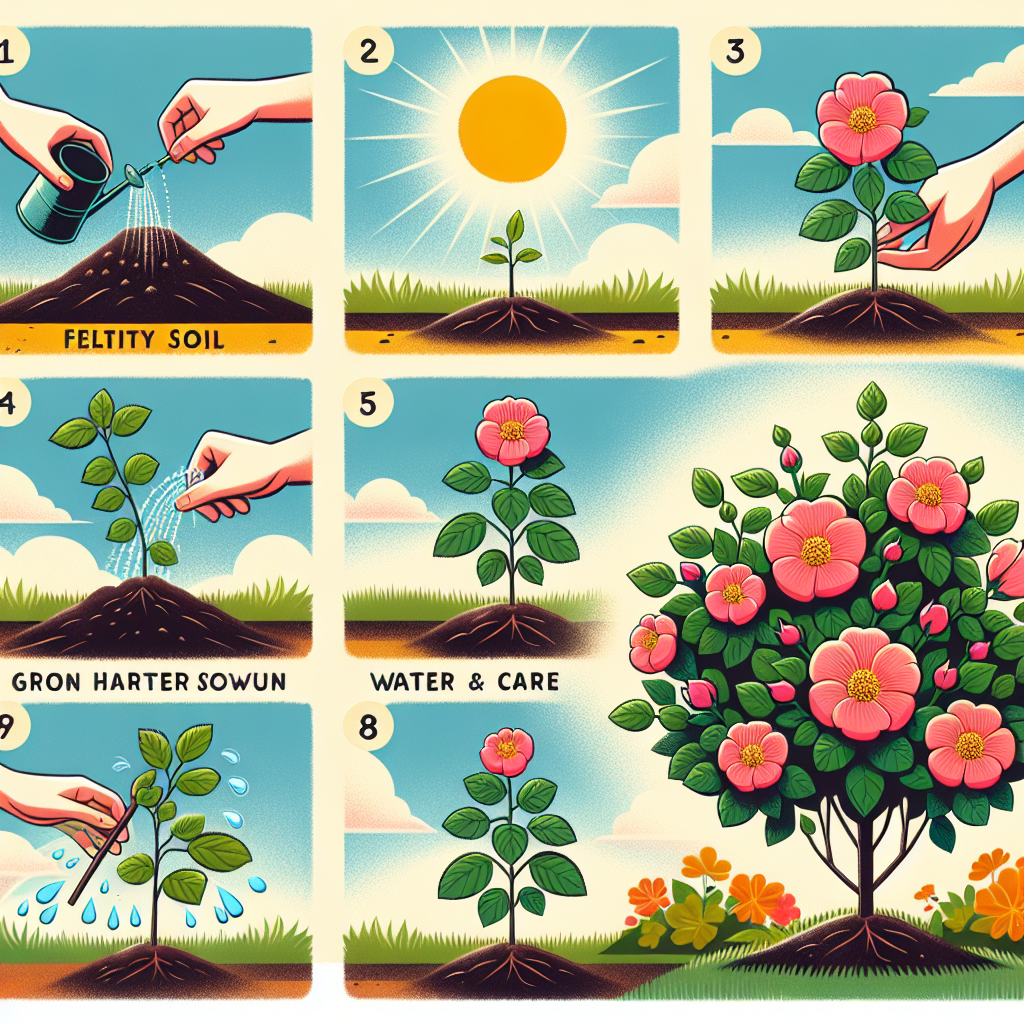
How to grow a rose of sharon
How to Grow a Rose of Sharon: A Comprehensive Guide
The Rose of Sharon (Hibiscus syriacus) is a stunning, deciduous shrub known for its beautiful blooms and ability to thrive in a variety of climates. Growing this lovely plant can transform your garden with its vibrant colors and distinctive flower shape. In this article, we will explore the key aspects of how to cultivate and care for the Rose of Sharon, ensuring that you can enjoy its splendor for many seasons to come.
Understanding the Rose of Sharon
The Rose of Sharon is part of the Malvaceae family and is renowned for its late summer blooms. With its origin in East Asia, this hardy shrub can grow up to 10 feet tall and spread up to 6 feet wide. Its flowers come in a variety of colors, including white, pink, purple, and blue, often featuring a contrasting center. The foliage is dark green and can add richness to any landscape.
Choosing the Right Location
When considering how to grow a Rose of Sharon, choosing the right location is crucial. This shrub prefers well-drained soil and abundant sunlight. Follow these tips to find the ideal spot in your garden:
- Sunlight: Ensure the selected area receives at least 6 to 8 hours of full sun daily.
- Soil: Well-drained, loamy soil is preferred, although they can tolerate clay and sandy soils.
- Spacing: If planting multiple shrubs, ensure they are spaced between 3 to 5 feet apart to allow for adequate airflow and growth.
Planting Your Rose of Sharon
Once you've selected the right site, it's time to plant your Rose of Sharon. Follow these steps for successful planting:
- Prepare the Soil: Amend the soil with organic matter, such as compost or well-rotted manure, to improve drainage and fertility.
- Dug the Hole: Create a hole that is twice as wide as the root ball and just as deep.
- Position the Plant: Place the Rose of Sharon in the center of the hole, ensuring that the top of the root ball is level with the surrounding soil.
- Backfill: Fill the hole with the amended soil, gently packing it down to eliminate air pockets.
- Water Thoroughly: After planting, give your new shrub a deep watering to encourage root establishment.
Caring for Your Rose of Sharon
Now that your Rose of Sharon is planted, proper care is essential to ensure its growth and blooming potential. Here are some critical care tips:
Watering
Keep the soil consistently moist, especially during the first year as the plant establishes its roots. The Rose of Sharon is drought-tolerant once established, but regular watering during dry spells will promote superior flowering.
Fertilization
Feeding your Rose of Sharon can enhance its growth and flowering. Use a balanced, slow-release fertilizer in early spring. Follow the manufacturer’s instructions for application rates.
Pruning
Pruning is vital for maintaining the shape and health of your Rose of Sharon. Here’s how to do it:
- Timing: Prune in late winter or early spring before new growth starts.
- Remove Dead or Damaged Wood: Cut away any dead branches or damaged wood to promote healthy growth.
- Shape the Plant: Trim to shape the shrub while keeping an open center for air circulation.
Pest and Disease Management
While the Rose of Sharon is relatively resistant to pests and diseases, it can be affected by aphids, spider mites, and fungal infections. Regular inspections will help you catch any issues early. If found, use organic or chemical pesticides as necessary, and ensure good air flow around the plant.
Propagation Techniques
If you’re looking to expand your Rose of Sharon collection or share with friends, propagation can be a rewarding experience. Consider these methods:
- Seed Propagation: Collect seeds from spent flowers in late summer. Sow them indoors in seed trays or directly in the garden after the threat of frost has passed.
- Cuttings: Take 6-inch cuttings from healthy stems in early summer and root them in a mixture of potting soil and perlite.
Seed Propagation Steps
- Soak Seeds: Soak seeds in water for 24 hours to enhance germination.
- Prepare Seed Trays: Fill seed trays with a moist seed-starting mix.
- Sow Seeds: Plant the seeds about 1/4 inch deep and water gently.
- Provide Adequate Light: Place trays in a bright, warm location or under grow lights.
- Transplant: Once seedlings are large enough to handle, transplant them into larger pots or directly into the garden.
Common Uses for Rose of Sharon
The Rose of Sharon is a versatile plant that can serve multiple functions in your landscape design. Here are some common uses:
- Hedges: Its dense growth makes it an excellent choice for privacy hedges.
- Flower Borders: Use it as a focal point or backdrop in perennial flower borders.
- Container Gardening: Smaller varieties can thrive in containers, adding vibrant color to patios and decks.
Final Thoughts on Growing Rose of Sharon
In summary, understanding *how to grow a rose of sharon* involves planning, proper planting, and ongoing care. By choosing the right location, providing adequate water and nutrients, and managing pests, you can enjoy the beauty of this stunning shrub for years to come. Remember that patience is key; while it may take time to establish, the reward of vibrant, late-summer blooms is well worth the effort.
"Rose of Sharon is a forgiving and resilient plant, ideal for both novice and experienced gardeners."
With the information and guidance provided here, you're well-equipped to add the magnificent Rose of Sharon to your garden. Happy gardening!
By Guest, Published on September 20th, 2024